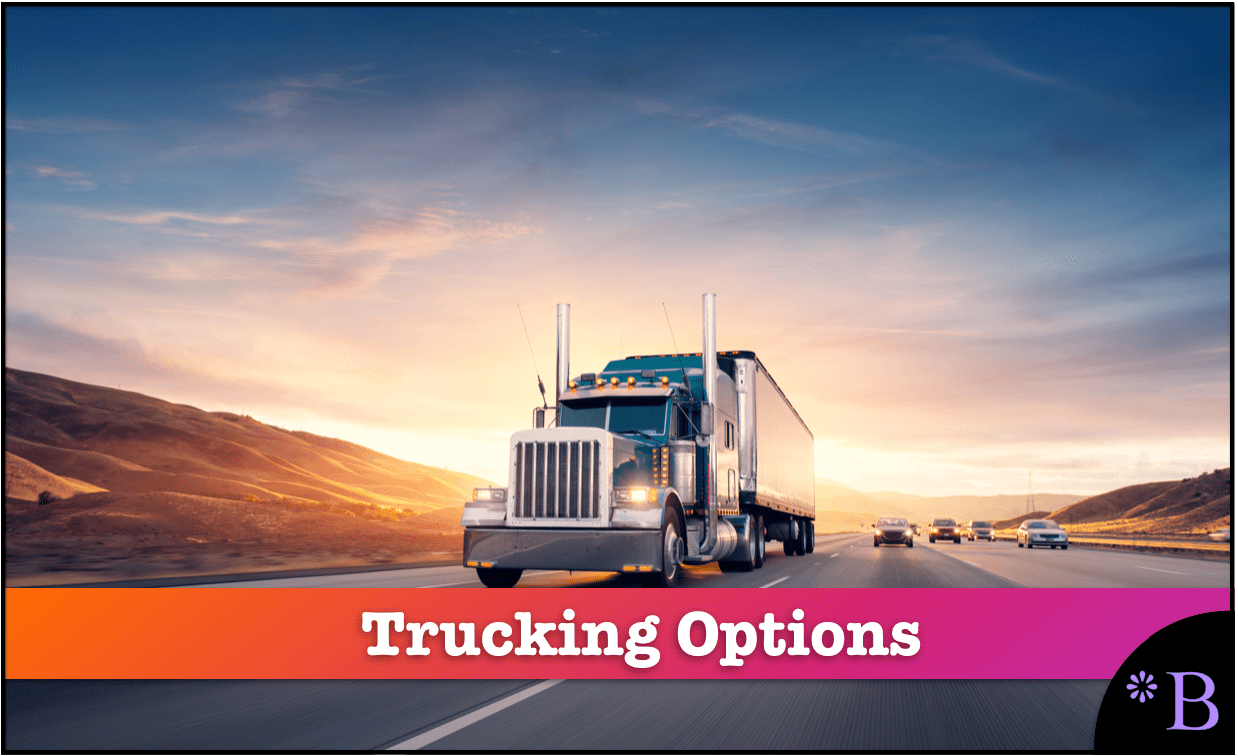How to Best Understand Your Trucking Options
Executive Summary
- An Introduction to Trucking and Trucking Service
- Long Haul Trucking Versus Short Haul Trucking
- LTL Versus Truckload or Full Truck Load
- Flatbed Trucking Versus Enclosed Container (Enclosed Trailer, Box Truck, Box Van) Versus Car Hauler Versus Tanker Trucking Companies

Introduction
Trucking and trucking services are broken into several divisions or dimensions.
This article will define long haul trucking, short-haul trucking, LTL, full truckload, and other commonly used trucking terms.
Long Haul Trucking Versus Short Haul Trucking
- Long-haul trucking is a truck service that moves more than 150 miles.
- Short-haul trucking is a truck service that moves less than 250 miles.
- Long haul trucking drives more miles, at higher speed, larger trucks, and spends almost all of their time on the freeway.
- Short-haul trucking drives few miles, at a slower speed, smaller trucks, and spends more of their time on a mixture of freeway and side streets.
LTL Versus Truckload or Full Truck Load
A truckload is just as it sounds. This is when a shipper has sufficient cargo to either weigh out or cube out a truck. In reality, box trucks seldom ship close to being weighed or cubed out. Most shippers use a rule in their load building to allow a truck to leave if it is 55% or more cubed out. But the principle applies. This is true even though container loading software applications are broadly used across the industry for some time. Container loading software sometimes provides a three-dimensional view of the container allowing the load builder to ensure that all of the cargo properly fits. In other cases, container loading software is more limited and only calculates a cube and dimension percentage.
- An LTL shipment is insufficient to fill a truck to an acceptable level, and it must be combined with other LTL shipments to obtain a truckload or full truckload.
- A truckload, also known as a full truckload, means that there is sufficient freight from the shipper to meet this minimally acceptable level to ship a full truckload rather than have the truck wait.
Flatbed Trucking Versus Enclosed Container (Enclosed Trailer, Box Truck, Box Van) Versus Car Hauler Versus Tanker Trucking Companies
There are four major types of trucking categories.
- Enclosed Trailer or Container Truck: The most numerous trailers are by far the first on our list or the enclosed trailer. When a smaller truck is used with an enclosed trailer, it is known as a box truck or box van. With a box truck or box van, the connection is permanent to the truck, and there is no trailer. The box truck and box van are normally for local delivery. Enclosed trailer or box van trucking moves just about everything that is either not a liquid or not a specialized load. There are different types of container trucks within the enclosed trailer category—one of the largest subcategories being the refrigerated truck. A refrigerated truck is simply a specialized container truck. A refrigerated truck is insulated and has a refrigeration unit. The most common use for a refrigerated truck is for the transport of food.
- Flatbed Truck and Flatbed Trailer: Flatbed trucking is only used for loads that won’t fit inside a container or box truck. Flatbed trucking and the flatbed trailer transport things like construction equipment like cranes, mobile homes, large heating and cooling units, and the like. Flatbed trucking companies are far less common than container trucking companies, and flatbed trucking companies have their freight brokers and freight boards. Unlike container trucks, flatbed trucking companies run the gamut and specialize in transporting specific types of products. Some flatbed truck service falls into the heavy load category and can be significantly more expensive to hire than a container truck service. On the other hand, a flatbed trailer can be no larger than a standard container in its bottom dimensions. A flatbed trailer can carry a wide variety of cargo. For instance, a lumber truck is essentially a modified flatbed trailer. Some flatbed trailers straight, and others are a gooseneck trailer design. The gooseneck trailer design, where the bed lies low to the ground and the front portion of the gooseneck trailer is configured in an “S” shape to connect to the trailer’s fifth wheel preferred design for heavy loads as it reduces the load’s center of gravity. But for most loads, the gooseneck trailer design is not employed, and a straight trailer design is used.
- Car Carrier: A car hauler trailer or car carrier is a specialized trailer that can only carry cars and trucks.
- Tanker Truck: Tanker trucking companies transport liquids and gasses. The primary market for tanker trucking companies is industrial transportation. This includes moving gasoline to gas stations, industrial chemicals between manufacturing plants and distribution centers, and liquid foods before being a finished good. Tanker trucking companies transport little in the way of liquids and gasses to the end consumer because by the time the raw material has been processed for consumption, it is generally placed into a carton or a bottle. Gasoline is the one exception, so gasoline tanker trucks are some of the most common types of tanker trucks.
Conclusion
Understanding the basics of trucking can take one a long way in knowing the options available in the trucking services and the options available to shippers.
References
According to the DOT, trucking represents around 2/3rds of all transportation in the US.